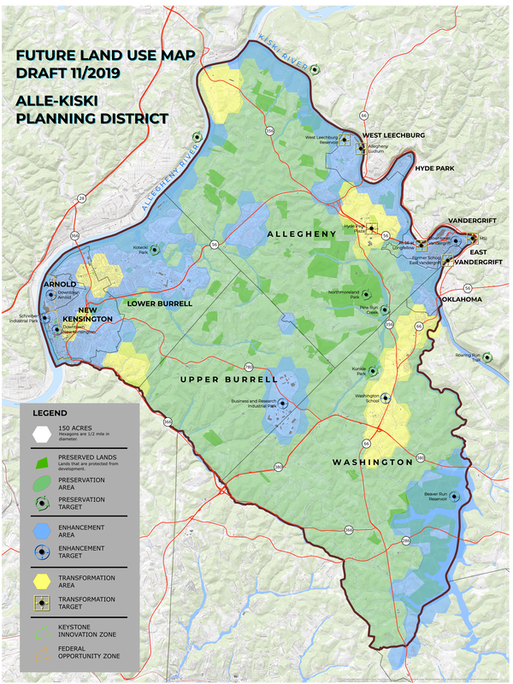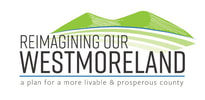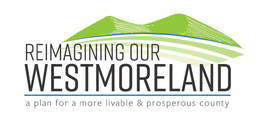|
Over the course of the last several months, your input has aided in the creation of the following Future Land Use Map for the Alle-Kiski region. Together, your respective municipalities have identified areas for Preservation, Enhancement, and Transformation.  At the last Alle-Kiski Planning District meeting on December 5th, we conducted a survey of land use priorities for each municipality that was able to attend. Together, we looked at strategies from Reimagining Our Westmoreland (see below) as they pertain to key issues that have been identified throughout the planning process such as parks and recreation, blight, etc. Alle-Kiski Planning District Land Use Strategies
We look forward seeing you in the New Year at the next Alle-Kiski Planning District meeting on January 22, 2020 @ 6:30 PM in Upper Burrell Township, 3735 Seventh Street New Kensington, PA 15068. At the November 7, 2019 meeting, we reviewed the basic assumptions underpinning the land use planning efforts in the District. This post reduces to writing those principles that represent a fundamental understanding or proposition that serves as the foundation for a system of belief or behavior or for a chain of reasoning. They help us conceptualize land use in a set of value statements. The set of principles listed below represent commonly held values that guide the process of land use planning in the District. They are presented below in a chain of reasoning, but not necessarily hierarchically.
Principle 1: Growth Is Inevitable Despite our region’s soft growth demand, growth and development will occur. Sound land use planning, guided by the concepts of Preservation, Enhancement, and Transformation, will inform how and where development occurs. Principle 2: Growth Has Impacts Growth and development have both positive and negative impacts on economies, the environment, and society. Focused efforts of Preservation, Enhancement, and Transformation will support the positive and mitigate the negative effects of growth. Principle 3: Preservation, Enhancement, and Transformation Depend on Public Decisions The public, both in its broadest sense (countywide) and narrowest sense (the individual), has an opportunity to shape land use in ways that maximize the financial, environmental and social impact of local decisions. Principle 4: Public Involvement Is Essential Since Preservation, Enhancement, and Transformation depend on public decisions, the public has a right to be a part of the decision-making process. Principle 5: Impacts of Land Use Decisions Extend Beyond Municipal Boundaries Decisions made regarding Preservation, Enhancement, and Transformation in one community can have financial, environmental, and social impacts on neighboring communities. Principle 6: Preservation, Enhancement, and Transformation Priorities Vary Among Individuals and Within Communities Some communities may value a rural setting, others may favor an intensely urban environment, while more may prefer a suburban development pattern. The same is true among individuals. Furthermore, these priorities can vary within communities. Balance among these priorities is essential to highly valued communities. Principle 7: Planning Is Essential at the Smallest and Largest Scales A cohesive community that balances the financial, environmental, and social impacts of growth and development relies on planning at the site, street, block, neighborhood, village, town, city, county, and regional level. The approach of Preservation, Enhancement, and Transformation provides a framework for land use planning. Refer back to these principles to understand guiding assumptions the Alle-Kiski team reflected on and verified as a set of assumptions we can rely on going forward. Reach out to Westmoreland County Planning to learn more. |

